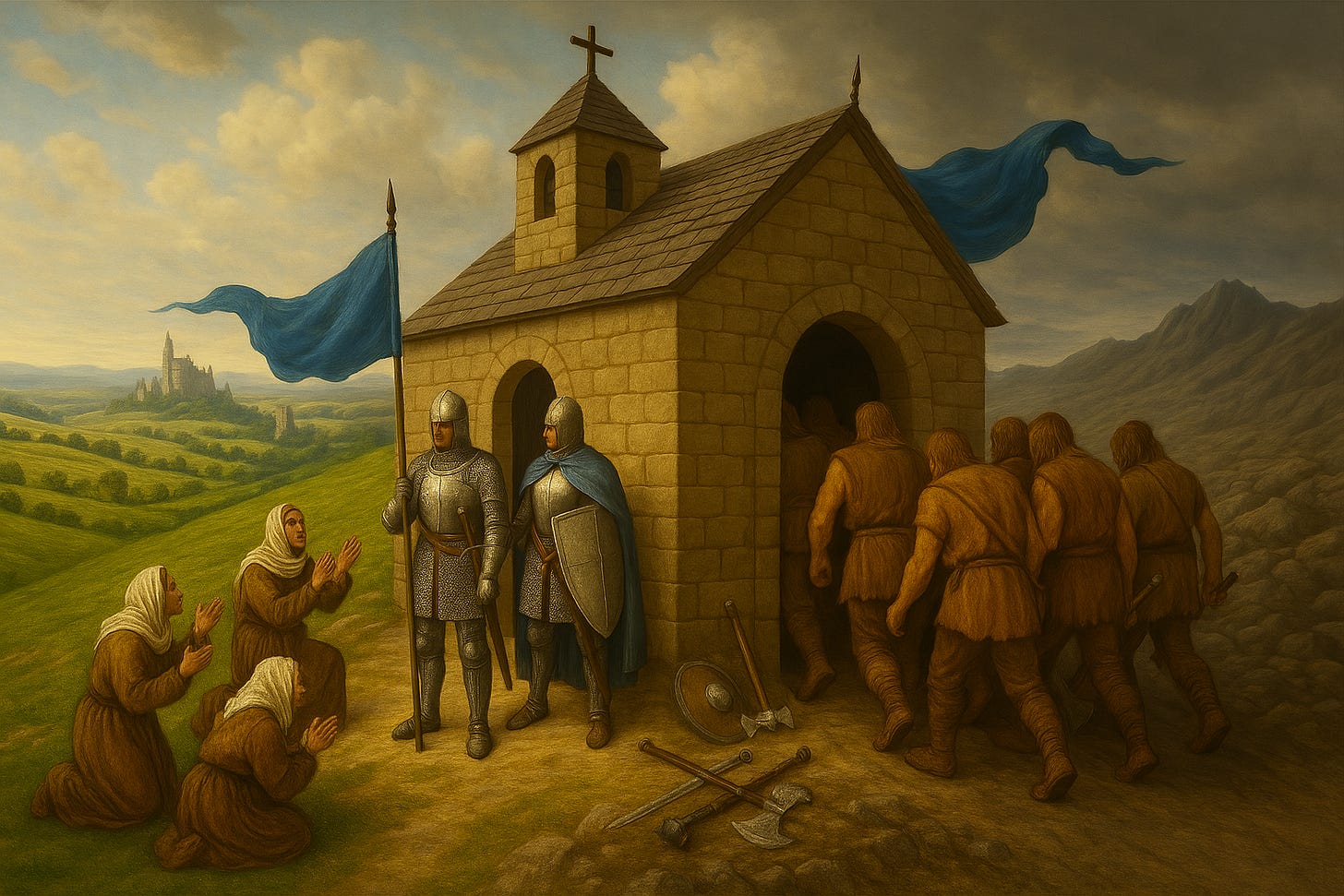This is chapter 15 of a book that I’m publishing serially, entitled The Information Class. To get up to speed, read the intro, chapter 1, chapter 2, chapter 3, chapter 4, chapter 5, chapter 6, chapter 7, chapter 8, chapter 9, chapter 10, chapter 11, chapter 12, chapter 13, chapter 14, and chapter 15. And sign up to get future chapters in your inbox.
The medieval knights are a case in point about how history shapes class. They appeal to the imagination, and that appeal is helpful in understanding them. But the distinctive history of their origins also supplies a lot of insight.
The knights were descended, physically in most cases no doubt, but at any rate morally and professionally, from the Germanic conquerors of the late Roman empire. That origin continues to shape them. There lingered about them something grim and sad, and Camelot was as doomed as Valhalla had been in old Norse myths. The ideal courtly love must remain unfulfilled.
Their lifestyle was full of echoes of the barbarian conquerors of Rome. In the legends, they come across as violent, masterful wanderers in the midst of a settled rural population vaguely inferior to them. In history, their great adventures made and unmade and reshaped kingdoms, and thrust them into the Mediterranean in the Reconquista of Spain and the Crusades, always wandering and fighting and often conquering and ruling.
But the knights were also sons of the Church, and of fallen Rome. By the time knighthood arose, the former pagan barbarians had long since become Christians and Catholics, and most of them spoke languages derived from Latin, especially French. It was natural that Charlemagne, though of Germanic descent, took the title of a Roman emperor, and attempted a kind of Roman restoration extending to the cultivation of learning and Latinity. After his dynasty fell, the emerging knightly class helped keep order and resist Viking invaders, championing Roman Christendom in their own way, even if they were more different from the Romans and still more Norse pagan in morals and mindset than they could understand.
As sons of the Church, they were dedicated to the cult of relics, they learned to govern their fighting impulses to conform to all sorts of Church rules about when and whom they must not attack, and their greatest wars in the High Middle Ages were directed against Muslims and heretics. Likewise, in the legends of King Arthur, their greatest quest was in pursuit of the greatest relic of all, the cup wherein was spilled the blood of Christ, the Holy Grail. The legendary knights adventured for Christ's cup as the real knights adventured for Christ's city.
Knights were needed as warriors, and that demand kept the knightly order in good health and justified them to society. But there was much more to knightly tradition than mere fighting, and that extra something, which was first inculcated by the Church and in due course flowered into the culture of chivalry, made the knights, first of all, better fighters, and second, less inclined to abuse the power that comes from combat prowess. Other warrior classes in history, such as the oprichniki of Ivan the Terrible or the ancient Assyrians, have been rendered more cruel and terrible by a peculiar ethos. But the knights’ ethos improved them. The tournament, the vigil of arms, the dubbing, the legends of King Arthur and the codes of chivalry, the legal privileges and duties of the knightly class, the manuals of courtly love, the crusading orders of military monks, and the coats of arms all conspired to hem knighthood in with beautiful traditions that made it special, and made the ever-necessary warrior into a new kind of person.
Medieval knights as a class eventually outlived the conditions that had given rise to them, and became obsolescent, for many reasons both social and technological. The later ages of chivalry provide many good examples of how a class can become fossilized. In its decadence, the chivalrous class in Western Europe hoarded its history, and each family remembered centuries of genealogical backstory. The stability of society enabled the chivalrous class to persist for centuries, still nursing the dreams of the age of knighthood. Its members often played active parts in European history, and indeed arguably remained the leading class of society even in the 18th and 19th centuries, yet their education, habits and morals didn't seem to be optimized for any role they still played, but pointed backwards to a glorious past in which they still took pride.
By contrast, we're told very little of the genealogies of the knights of King Arthur's court. Then what mattered was deeds and character: not history, but virtue, effectiveness and impact. Pride of ancestry can be good for a class if moderate, but can also degenerate into mere snobbery. A class needs to learn from its own history, but it can learn too much, or if you prefer, it can abuse the lesson.
There is a sense in which the knights were and can never be again. History made them, and history eclipsed them, and their class was the product of that history, and no class can ever again have that same history and therefore that same character. It's like fingerprints.
And yet it's remarkable how well, after all, history can be recaptured, past glories brought back from the dead. And the later history of the knightly class provides a striking example.
Before we part with the knights for a little while, there's something important to take note of. The knights were a ruling class that was also a moral ideal, admired alike by kings and popes and peasants, whose stories fascinated their own age and many ages that followed. Civilization hasn't had that since. But it can be done.




